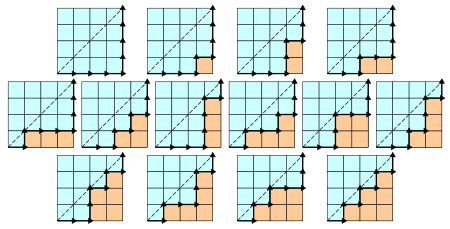I don't like math. At least the one that is taught in schools. Everyone knows that math is horrible, difficult and is some sort of torture for most people. I don't like math, or at least what most people believe is math. Usually when people hear the word math they think of $x$'s, $y$'s, graphs, numbers (lots of numbers) and equations (those things with the $=$ sign). But that is not math, that is the language that math uses.
It is funny, because some 400 years ago all those things didn't even existed, even though math has been there since the beginning of human kind. At that time, all mathematics was written in a more literary way.
What people usually think about math is basic algebraic manipulations and arithmetic. I think that one of the main problems lie in the fact that teachers always say that math is useful, that people should learn precalculus and calculus to use it in applications, but they focus (at least the big majority) only in teaching the language in which math is written, but not math itself.
When one thinks about poetry for example, one doesn't think about verbs, nouns, adjectives, pronouns, etc., we think about the beauty of the ideas expressed and the structure of it, not the actual words. Thinking that math having weird equations on a board is like thinking that poetry is just mere grammar studies.
Definitely, one has to learn first the grammar rules before studying or writing poetry. Likewise we must learn the language in which math is written before studying real math, or doing our own. This initial stage can be a bit boring and tedious, as it should be mainly repetitive and mechanical, but has no difference from an elementary english or a grammar course. The fact is that many people think that math is this boring first stage, which is rather sad.
There is an important difference between a description and the language used to make that description. One can think of math as describing things, their properties and interactions, but we must have a language to express these things. That language can be english, spanish, japanese, algebraic notation, geometric shapes, music scores, emoticons, etc. It is not the same to study a language than study something in a language. Math is about studying or analyzing things, and it uses a language. Just because you know french, that doesn't mean that you can understand an article about quantum gravity that happens to be written in french. Likewise, knowing calculus is not the same as knowing math. Just because a parrot can say words doesn't mean it understands what it is saying. Telling someone that learning math is learning how to take derivatives, integrals, how to factor and multiply big numbers, is like making a parrot believe it knows how to speak.
